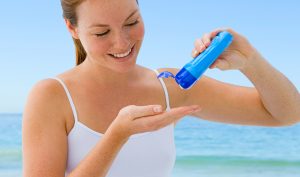 Sunny summer days are great, but all that heat can make you sick if you aren’t smart about protection and prevention.
Sunny summer days are great, but all that heat can make you sick if you aren’t smart about protection and prevention.
There were more than 7,200 heat-related deaths in the United States between 1999 and 2009, according to the U.S. Centers for Disease Control and Prevention (CDC). Heat can warm the bones, but it’s also a potential danger.
Advertisement
Follow these 5 tips for the prevention of heat-related illness, and you’ll be able to enjoy the long days and warm nights without worry.
1. Know your own body There are some personal factors that can make people more susceptible to heat-related illness. The elderly, young children and people with chronic diseases or mental illness are most at risk during high heat, the CDC reports. Those with conditions like obesity, heart disease, and poor circulation, or people who are taking certain prescription drugs or using drugs or alcohol, are also at higher risk.
RELATED READING: Don’t put it in your mouth! Dangers lurking on your toothbrush
2. Turn on the AC Air conditioning is the top prevention factor against illness and death related to heat, according to the CDC. If you have air conditioning, use it at home when needed. If you don’t but need a break from the heat, find a local spot that offers it. Many public libraries have air conditioning, for example, and most cities offer cooling centers that people can visit when it’s particularly hot and humid outside.
3. Stay hydrated and get wet Even if you don’t think you’re thirsty, it’s important to take in plenty of fluids when the weather is hot. The CDC recommends drinking more water than usual, at regular intervals – don’t wait until you feel thirsty to guzzle a glass down. If you are working or exercising outside, drink two to four cups of water for each hour you’re out there. And avoid alcohol and sugary liquids, the CDC recommends, which can be dehydrating.
You can also use water to cool yourself down from the outside in – take cool showers or baths if you need to get some heat relief.
4. Wear sun protection Apply sunscreen often and properly: use more than you think you need, don’t miss any spots, and re-apply right after swimming or excessive sweating or every two hours. Wearing lightweight clothing that covers your arms and legs also offers some UV protection, as does wearing a hat that covers your face and the back of your neck. And stay in the shade when outside – particularly during the afternoon hours when the sun is at its highest point in the sky.
RELATED READING: Take a closer look at your feet for health warning signs
5. Know the warning signs While prevention is the best strategy it’s also important to know the symptoms that indicate a heat-related illness, so you can receive medical help right away in the case that you get sick.
If you experience symptoms including heavy sweating; weakness; fainting; nausea or vomiting; a fast, weak pulse; or cold, pale, and clammy skin, the CDC recommends moving to a cooler location, lying down, loosening your clothing, applying cool and wet cloths to your body, and sipping water.
Advertisement
If you continue vomiting, seek medical help. And if you experience more serious symptoms like a body temperature above 103F, a rapid and strong pulse, possible unconsciousness, or hot, red, dry, or moist skin, call 911. If you are with another person with these symptoms, after calling emergency service you should move him or her to a cooler environment and use cool cloths or a bath to reduce the body temperature, but do not give fluids – wait for help to arrive.
Related Reading: ‘Cool’ health foods to eat this summer
